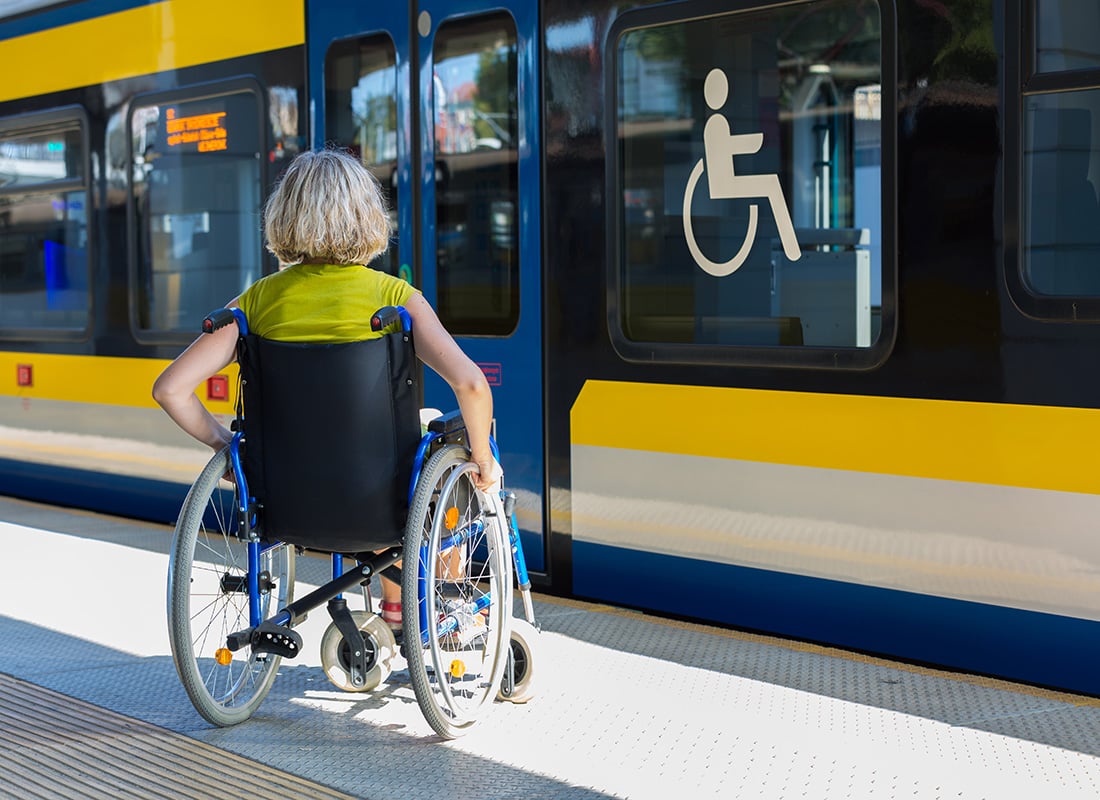Transreport’s Passenger Assistance has already facilitated more than seven million journeys for over a million users with access needs. Jay Shen, CEO at Transreport, talks to Grant Powell MBCS about the tech solution that’s set to transform accessible travel across the globe.
Transreport’s Passenger Assistancev is transforming travel for millions of disabled and older passengers, as well as those with other access needs. Having already facilitated more than seven million assistances for over a million users, a partnership with Japan’s Hankyu Corporation is now seeing the technology rolled out to support Japanese rail services. Jay Shen, Transreport CEO, explains the purpose of the technology and shares his vision for leveraging its potential to break down barriers, helping to improve transport accessibility worldwide.
Can you tell us about Transreport and the technology you’ve developed?
At Transreport, we specialise in access solutions with a strong focus on empowering disabled and older people, and anyone with access needs, to travel independently and with confidence. We’ve created a multimodal platform that helps improve customer experience and operational efficiency, starting with the UK rail system and expanding into aviation and potentially other sectors.
Our goal is to make the entire travel experience smoother and more reliable for everyone, especially for those who need extra assistance. Our technology makes communicating access needs much easier, simplifying the process of requesting assistance, reducing the margin for human error, and streamlining efficiency. For example, in the UK rail industry, we’ve made it easier for people to request assistance in advance. It’s about offering a more seamless and reliable service that can even drive revenue for transport providers.
What are the challenges that people with disabilities face when travelling?
Disabled people experience many barriers such as unreliable assistance, missed communication, or poorly coordinated services. As an example, passengers may request assistance, but when they arrive at the station no one is there to help, or a wheelchair ramp that has been promised isn’t available. These issues can lead to frustration and a lack of trust in the system, and ultimately an avoidance of using travel services altogether.
In the past, passengers have needed to completely rely on phone calls, emails or pen-and-paper methods to arrange assistance, making the experience unreliable and time-consuming. Our technology reduces these barriers by ensuring that booking processes are reliable and that assistance staff are properly organised and notified promptly. It also makes it easier for passengers to communicate any access requirements all through a single platform, improving the overall experience and reducing the chances of something going wrong.
Can you share any statistics around how the technology has benefited the UK?
The impact so far has been significant. Since the technology was introduced, there has been a substantial increase in the number of assistance requests — nearly 7.8 million since launching. The Department for Transport and the Office for Rail and Road produced a report which found that customer satisfaction for assisted travel in UK rail jumped from 85% to 95%. We’ve seen similar success in Japan. Since integrating our technology with Hankyu Corporation our platform is facilitating over 20,000 assistance requests every month, and with 300 rail companies in Japan that number is set to grow exponentially. Accessible travel technology is making a real difference. This isn’t just a customer service win — it’s a business win too.
How do you appeal to rail companies to invest in improving assistance methods?
At Transreport, we believe the most effective way to drive change is to align accessibility with both purpose and performance. While regulatory frameworks have certainly helped move the industry forward, our conversations with transport operators have evolved significantly in recent years. We focus on empowering our industry partners to go beyond compliance and create real value — not only the value to the millions of people who benefit from more accessible travel, but also the commercial and operational benefits for businesses.
Accessible travel unlocks a vast and often underserved customer base. Our case studies from the UK and Japan show that when accessibility is embedded into the passenger experience, it improves customer satisfaction, operational efficiency, and brand trust. Rather than framing accessibility as a mandate, we position it as an opportunity — one that forward-thinking companies can embrace to lead the way in inclusive travel.
Moving beyond rail, are you seeing similar success in other sectors?
We’ve expanded our platform beyond rail into other sectors. For example, earlier this year we launched our technology with a UK airport, aiming to create a connected journey for disabled passengers that spans multiple transport modes. Currently, disabled people may experience having to communicate their access needs to multiple companies at multiple journey stages. Our goal is to create a single platform that allows people to plan their entire journey, from their home to the airport, train stations and hotels, all while ensuring that the necessary assistance is arranged seamlessly at each point along the way.
Why has such a joined-up approach been unavailable in the past?
It really comes down to the lack of a single, unified system for arranging travel assistance. Each mode of transportation is relatively siloed, using completely different systems, which can make the travel experience confusing for passengers. Our goal is to create a platform that integrates all these services, making the booking process easier and more reliable for everyone.
For you
Be part of something bigger, join BCS, The Chartered Institute for IT.
We’re also working to get businesses to think about accessibility from the start, rather than as a costly and inefficient afterthought — it needs to be built into services and networks right from the design phase, not tacked on at the end.
Designing accessible services from the outset saves money, makes processes much more efficient, and enhances the customer experience. For disabled passengers, accessibility is often more important than price — if the service isn’t accessible, they may not travel, regardless of how cheap the ticket is. Businesses that prioritise accessibility not only improve the lives of their customers but also stand to gain financially by tapping into a growing market that has traditionally been underserved.
What advice would you give to businesses looking to improve their accessibility?
Start by embedding accessibility into your core service design, not as a bolt-on or a compliance checkbox, but as a fundamental part of the user experience. When done right, accessibility doesn’t just benefit disabled people, but creates a smoother, more intuitive experience for everyone. The most forward-thinking companies recognise that accessibility is a driver of both innovation and growth, opening up new markets, building customer loyalty and enhancing brand reputation.
It's also vitally important to involve the people you're designing for. Co-creating with disabled customers ensures that your solutions are not only compliant, but truly relevant and impactful. Accessibility is not just the right thing to do, it’s the smart thing to do. This approach can only strengthen the entire transport industry and create a more equitable future of travel for all.












